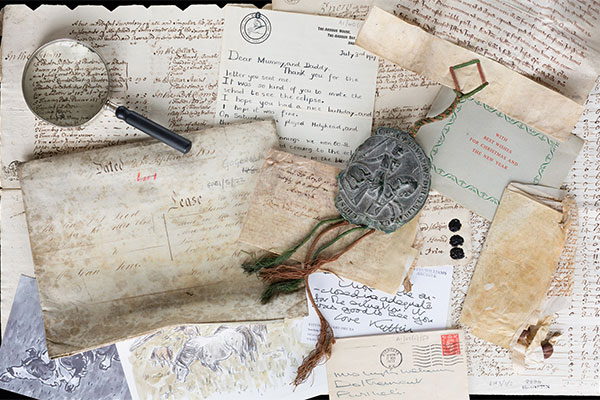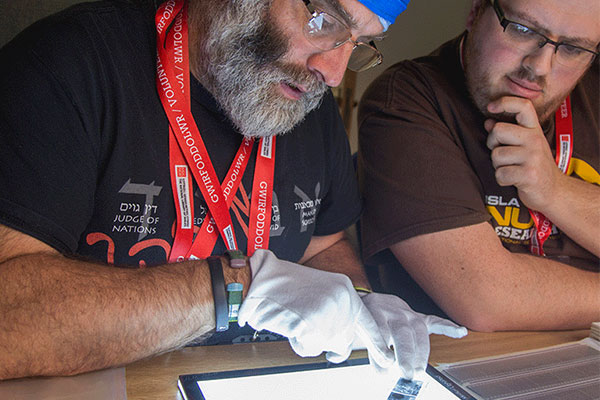History of the Manuscript
The festivals named in the Calendar, and the inclusion of a miniature of St Thomas Becket (f. 28v), demonstrate the artist's desire to tailor the volume to suit an English buyer. An early 16th century inscription in the Calendar for March (f. 3v) refers to the death of Elizabeth Grey, wife of Sir John Grey of Blisworth, Northamptonshire, and the arms inserted into the margins elsewhere in the volume are associated with the same family. Sir John Grey was a great-grandson of Reginald, third Baron de Grey of Rhuthun, whose animosity towards Owain Glyn Dwr led to the latter's rising. The history of the manuscript between the early-sixteenth and late-nineteenth centuries is unknown.
In 1895, the volume was purchased by Henry Yates Thompson, probably the greatest manuscript collector of his generation, and it remained (as MS 27) in his collection until it was sold at Sotheby's, 23 March 1920, lot 42, and purchased by Miss Gwendoline E. Davies of Gregynog, Powys. The 'De Grey' Hours, along with the 'Sherbrooke Missal' (NLW MS 15536E), were presented to the National Library of Wales by Miss Margaret S. Davies, Gregynog in 1951.




